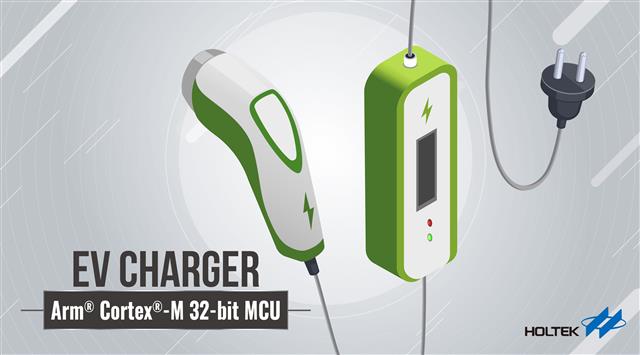The electric vehicle (EV) industry has developed a wide range of multi-wheeled electric vehicles, including self-balancing unicycles, two-wheeled scooters, electric motorcycles and bicycles, three-wheeled tuk-tuks and also four-wheeled new energy vehicles. According to TrendForce data, the total global sales of new energy vehicles in the first quarter of 2022 will reach 2 million units, with pure battery electric vehicles (BEVs) seeing the strongest growth, with sales reaching 1.5 million units. However, the problem of insufficient charging piles and the inconvenient location of charging stations has created what is known as user "range anxiety". Therefore, the demand for smart home charging and portable EV charging equipment in commercial and residential facilities is rapidly increasing. According to Grand View Research, the global electric vehicle charging infrastructure market size was valued at USD 19.26 billion in 2021 and is expected to grow at a compound annual growth rate (CAGR) of 30.6% from 2022 to 2030.
Holtek Semiconductor has already released and entered volume production of several generations of 8-bit ASSP MCUs directly aimed at one to three-wheeled electric vehicle chargers. This device range is known as the HT45F5Q-x series, for which more information on these complete charger solutions can be found on the Holtek website. To complement this, Holtek also provides a "Charger Development Workshop" which greatly assists customers to rapidly develop their charger products. When used together with the "Charger Volume Production Tool Fixture", it can significantly reduce the time required for factory calibration, thereby increasing production capacity and reducing costs. For four-wheeled electric vehicle charging equipment, HOLTEK has already released different types of Arm Cortex-M core 32-bit based MCUs. These 32-bit devices, such as HT32F50230, HT32F50241, HT32F6771, meet the needs of portable charging guns, wall-mounted chargers and standalone charging pile applications for various types of AC charging equipment. Holtek's HT32 MCU and its NFC Reader controller, the BC45B4523, have already been successfully used in charging equipment products of well-known EV charging companies both in Europe and the US.
There are four main common EV charging modes. According to the IEC 61851 specification, the external charging equipment includes:
*Mode 1: here the EV is directly connected to a standard home electrical socket via a charging cable (current ≤ 16A). As such cables have no protection features, many countries have banned or restricted their use in public localities.
*Mode 2: here the EV is connected to the household AC power grid (current ≤ 32A) via a charging cable equipped with a control and protection device (IC-CPD). This protection device can detect and monitor ground connections, over-current, over-temperature and other protection conditions. This not only ensures safer charging but also complies with electrical specifications. As for common products on the present day market, these include portable charging guns which offer slow AC charging. Mode 3: here the EV is connected to stationary AC power supply equipment (EVSE) through a charging cable. These offer PWM communication, various types of control and a range of protection functions which can meet public safety requirements.
*Mode 3 (current ≤ 250A) charging is compatible with Mode 2 (current ≤ 32A) charging. Here common market products include wall-mounted charging piles which have a power of 7KW~11KW and include both AC fast charging and AC slow charging.
*Mode 4: this is an external charging device mode which has a DC output. The DC current directly charges the battery without passing through any on-board charger (OBC). Generally, the power provided by EVSE is much larger than that of OBC, which can greatly reduce the required charging time. It requires a higher-level of communication and more stringent safety features. The charging cable is permanently connected to the power supply equipment. A representative product here would be DC super charging piles, which have a general power capability of around 30KW or more, which puts it into the fast DC charging category.
Although DC charging piles have high power capabilities and faster charging features, their installation costs are higher and with the number of installation sites being limited, this will make them more difficult to expand. Contrary to this, AC charging equipment has the advantages of lower cost and easier equipment installation. For this reason, wall mounted and standing charging piles will continue to see an increased presence in households, communities, office building and car parks, etc. As for portable AC chargers, in being able to be conveniently carried and the ability to effectively charge almost anywhere, this greatly resolves the mileage anxiety pain experienced when using electric vehicles.
HOLTEK is a professional leading MCU IC design company with highly proficient and experienced technical support teams and a global sales and business service system. Holtek's full series of Arm Cortex-M 32-bit MCUs have already entered volume production and have passed UL/IEC 60730-1 Class B software certification, therefore they can provide relevant and complete self-inspection procedures. All of these combined advantages gives Holtek the drive to make serious inroads into the home smart wall-mounted EV charging pile and lightweight portable EV charger market area.

HOLTEK 32-bit MCU electric vehicle charging equipment solution


